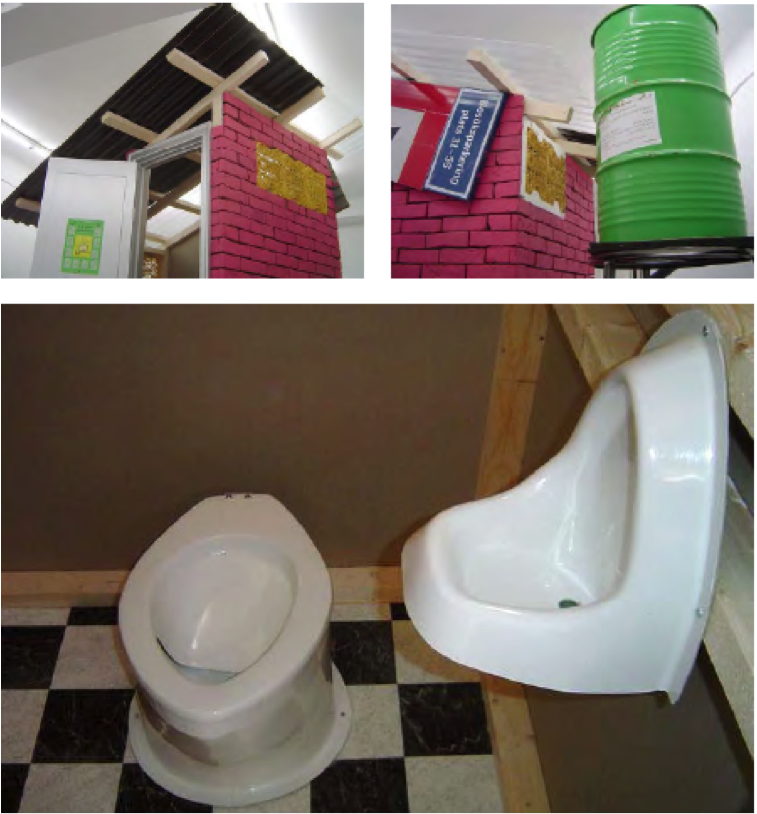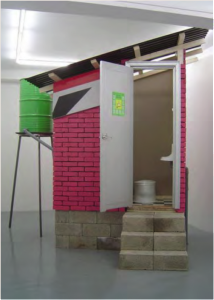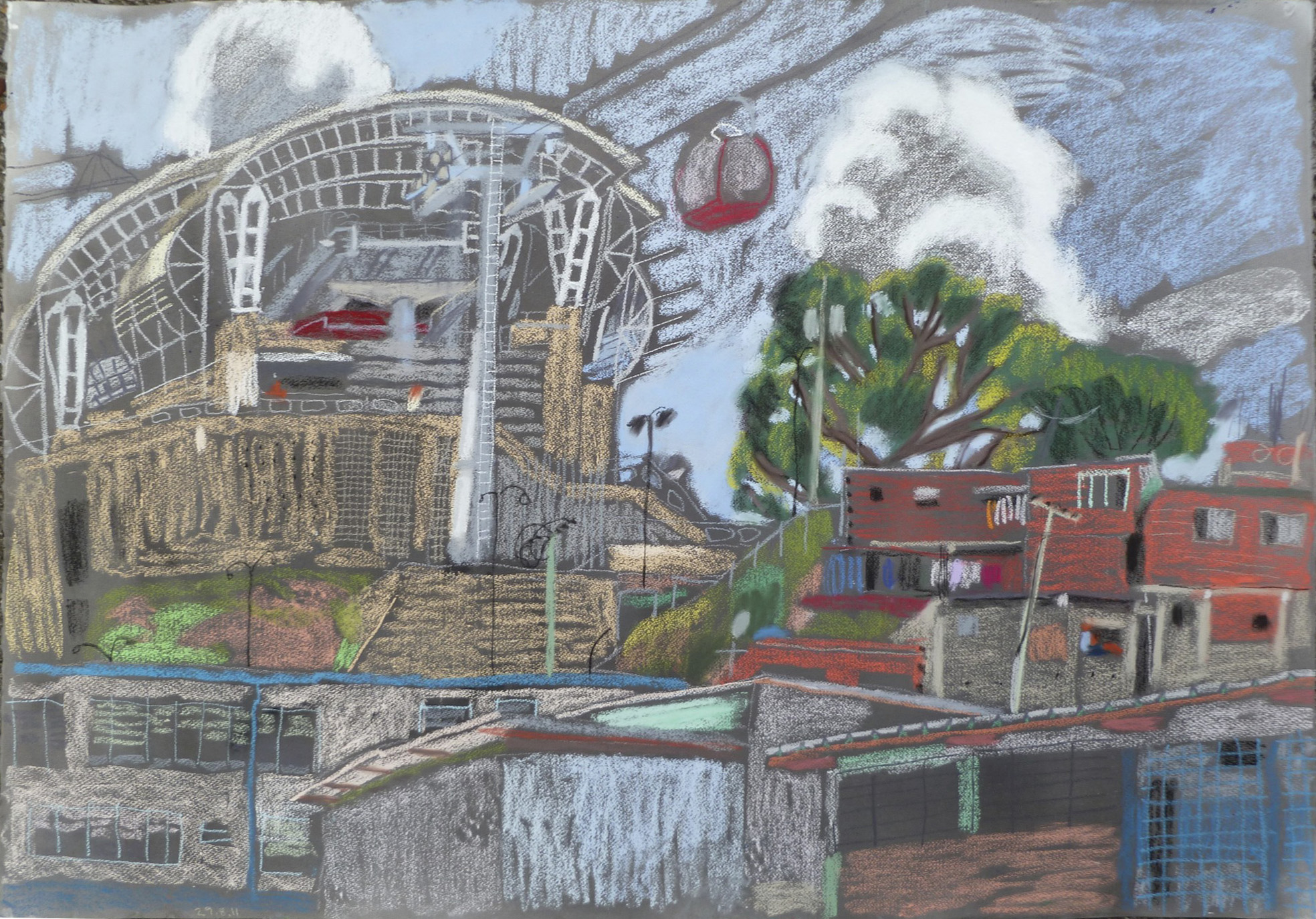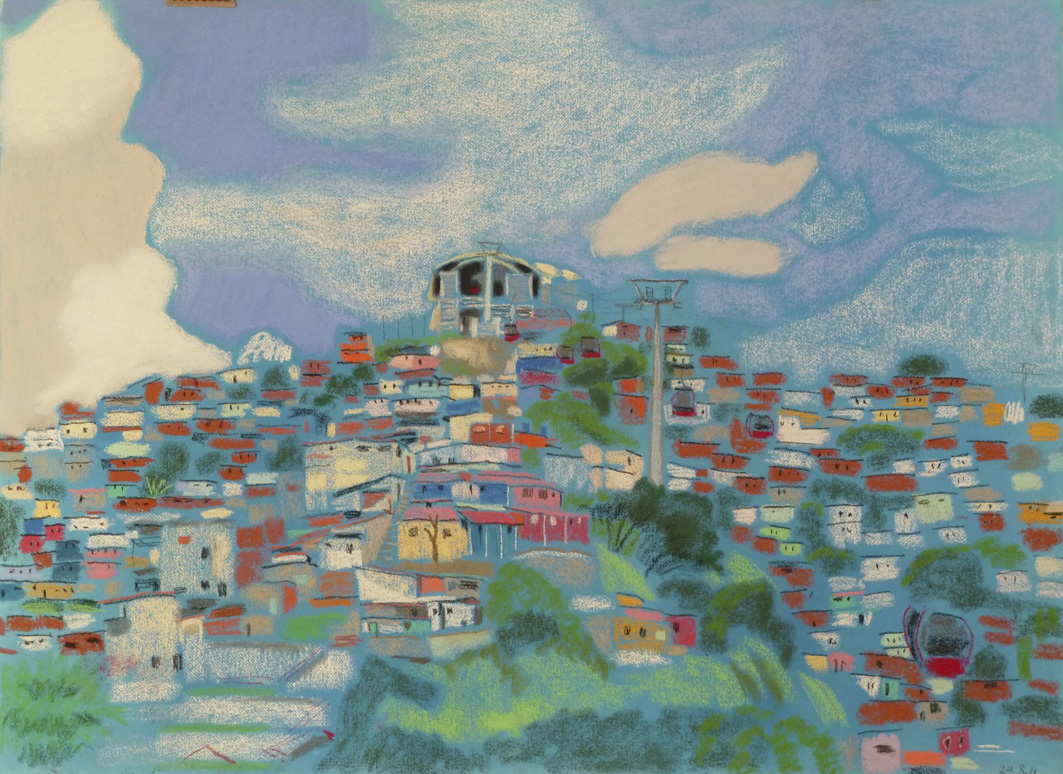(X)
Imminent + Poetics ≠ Relational + Politics
(Luis Pérez-Oramas) ≠ (Nicolas Bourriaud)
As in any first-degree equation, we must clear the variable, in this case, the artistic scene (X), which, ever capricious and brutal, behaves like an electron: it appears and disappears, visibilizing and invisibilizing the peripheral or nuclear elements that it sometimes orbits and sometimes doesn’t.
Once the problem is laid out, we are non-presential witnesses of an event: two titans, Nicolas Bourriaud and Luiz Pérez-Oramas, attempt to clear the variable (X), to freeze, in a fraction of time-space, the erratic movement of that savage and tender electron we sometimes call art.
Relational + Politics = X
If we place X on the relational + political side, we would have to understand this variable as a territory of socialization[1]. X, separated from its «formalism» and fetish, now mutates into a dislocated practice that flirts with the social sciences and community transformations.
It centers its nucleus on human relations as raw material for its work. The sign resides in the relations and interactions between the subjects-authors of the work (previously spectators) and not in the signifier (process, product, or object.)
To assume → Relational + Political = X, and to link it with a place—Caracas—would be to think of Marjetica Potrc & Natalya Critchley. The former with her Caracas: Dry toilet, the latter with Metro Cable San Augustín. Both propose direct work with communities as the center of their work, and the residue (drawings, installations, photographs, etc.) as appendages of a real, political, and functional event. Their pieces hope to be read as a record or trace of REAL work, which happened when they became involved with the problems and inhabitants of the communities.




Imminent + Poetics = X
Identifying X with the poetic and the imminent implies “the possibility of translating, with the resources of art, a certain way of looking at things”[2]; an exercise of enunciation and interlocution that privileges the place from where it is observed and vindicates the poetic function of language above the function of socialization.
To understand → Imminent + Poetics = X and find a place for it—Caracas—involves speaking about Juan Nascimento / Daniela Lovera and Alfredo Cortina. From the field of the moving image, Juan Nascimento / Daniela Lovera structure a discourse that constantly revisits its place of origin and its influence on their of reading the world. Alfredo Cortina performs a similar process from the field of photography, describing the human-space.
Juan Nascimiento/ Daniela Lovera. Sin título (Canción para banda militar). 2006.

Relational aesthetics and the Imminence of poetics are found on opposite plateaus, triangulating the same territory. Bourriaud and Pérez-Oramas seek to establish, with their own methods, the cartography of artistic scene X by capitalizing on two elements that are key to report on the oscillations of art: ▲ Temporality Nomenclature. ◙ Referential system.
▲
How to Name the Time that Slips, that We Endure and Experience?
Imminent is Pérez-Oramas’s path, moving away from the contemporary or current term.
“(…) Contemporaneity is a construct, a relatively arbitrary cut in the coordinates of our experience of things, within its ever partial temporality.” [3]
“(…) Contemporaneity is not current, if by current we understand the self-interested and marketing management of what is illusory and fascinating about the present: the fascination with fashion and its systems, which always leads to the transformation of everything into fetish and merchandise.”
“Imminence is the attitude of waiting: to expect words from images; to wait for word from images.” In Bourriaud, the time that goes by, which he refers to as «Nowadays» or «The present,» is a place limited by unclear boundaries linked to globalization; a war-stricken territory that art, fashion, and the “great spectacle” battle to conquer.
“The urgency of the present and the great spectacle, a priori incompatible with the agenda of art, have invalidated it.” [4] This difference when setting coordinates has much to do with the second factor in dispute: reference systems (◙).
In the Middle Ages, temporality was detached from Biblical and religious times. In that way, the future was established as eternity. Along with the mechanical clock were born a system of references based on reason and a formalism that decoded the phenomena of existence with a different nomenclature: modernity, and with it / against it / in favor of it / without it | multiple mutations with different names arose (post / pos / trans / meta / hyper / alter / etc.)
◙
What Reference System to Use?
Pérez-Oramas is expansive: from Mexico to Patagonia a residual process has existed, an “inadvertent modernity,” “involuntary,” “illiterate,” that does not come “from a will to power.” A modernity by chance, by randomness, by inertia, sudden and illogical. It is this crazy type of modernity that unites us as a continent what interests Pérez-Oramas in his Inminencia de las Poéticas [“Imminence of the Poetics”].
The result of this inadvertent modernity is consolidated as a referential base to draw, with the compass of criterion, the paths that art must travel. Pérez-Oramas understands that the opposite of this mutant and illiterate modernity is globalization: the mask of the Universalist, European, intentional modernity that still operates in Biennials and other “high” art events; this is evinced by the search for exuberance within the hygienic domain of the marginal and the miserable.
Bourriaud bets on “The Altermodern,” in which “South America” would have an “extraordinary historical fate.” “Today, precisely what I call the altermodern, that is, a non-continental (European) modernity, not based on the vague universalism of the early modernism but the fruit of dialogue and translation, can be deployed. (…) From this moment, there is a possibility for the constitution of a new modernity, not based on an illusion of progress, an illusion of universalism as used to be the case, but truly from that cultural friction, that production of singularity; for translation produces singularity.” [5]
For Bourriaud, the altermodern develops in all those countries that have undergone emancipatory processes and generated their own singular tactics of survival, tactics created amid the game of the global powers –previously, settlers. Despite the proximity of both positions, confusion must be avoided. “The altermodern” conceals within itself the phantom of the European-Universalist modernity that is sure to understand everything and to dominate everything from its categories of knowledge.
Pérez-Oramas’s inadvertent modernity means just the opposite: to verify that not everything can be known, explored or explained because that absolute is approached from specific coordinates. I observe phenomena from a certain position that cannot be, nor aspire to be, omniscient.
Likewise, Relational Aesthetics masks its true altruistic face with “political” actions: Marjetica Potrc was born in Ljubljana, is an architect, travels to Venezuela, comes into contact with communities in the La Vega neighborhood of Caracas and encounters the area’s water supply issues. She proposes a solution: dry toilets. Later, she travels the world setting up installations in galleries and museums; she employs the inadvertent construction technique she learned in this populous high-risk area and showcases her invention, Caracas: Dry Toilet. Meanwhile, La Vega still faces the same problem.
In order to take responsibility of our cultural environment, it is essential to follow closely the theoretical divergences that occur. “Complementary opposites” would be a good way to name these two titans, who embody the thought of our imminent moment.
References
[1] “The problem is no longer to displace the boundaries of art, but to test the limits of art’s resistance within the global social field. Two radically different problems arise from the same type of practice: yesterday, emphasis was placed on the internal relations of the art world, inside a modernist culture that privileged the ‘new’ and called for subversion through language: today, the emphasis is placed on external relations, within the framework of an eclectic culture where the work of art resists the flattening effect of the ‘society of the spectacle.’” Bourriaud, Nicolas (2006). Estética relacional. Buenos Aires: Adriana Hidalgo, publisher.
[2] Pérez-Oramas, Luis (2014). La Inminencia de las poéticas. Caracas: Sala Mendoza.
[3] Luis Pérez-Oramas, 2014. La Inminencia de las poéticas. Caracas: Sala Mendoza.
[4] Bourriaud, Nicolas, 2008. Heterocronías: Topocrítica: El Arte Contemporáneo y La Investigación Geográfica: Salamanca, CEDENAC.
[5] http://www.artishock.cl/2013/09/02/contra-la-postmodernidad-y-la-cuestion-del-origen-entrevista-a-nicolas-bourriaud/
About the Author:
Nicolás Gerardi (1989) is a visualist who develops mutant projects between curatorship, live cinema, writing, and digital creation. Currently, along with María Isabel Acosta Alfaro, he’s part of the blog www.TEXTVRA.NET, dedicated to encouraging the Caracas tempo from www.buscatuespacio.com.ve and to cultivating memory through wild investigations.
















